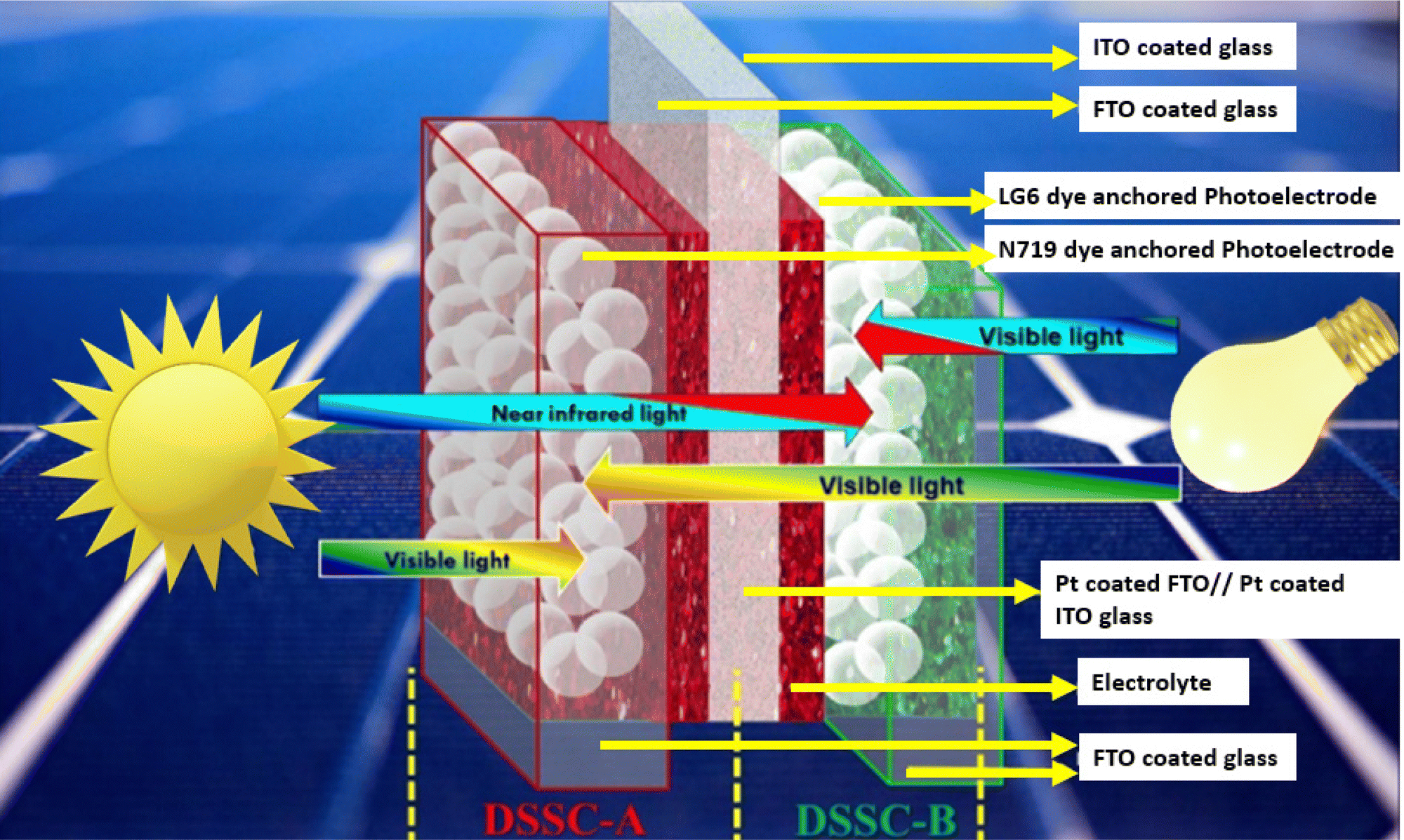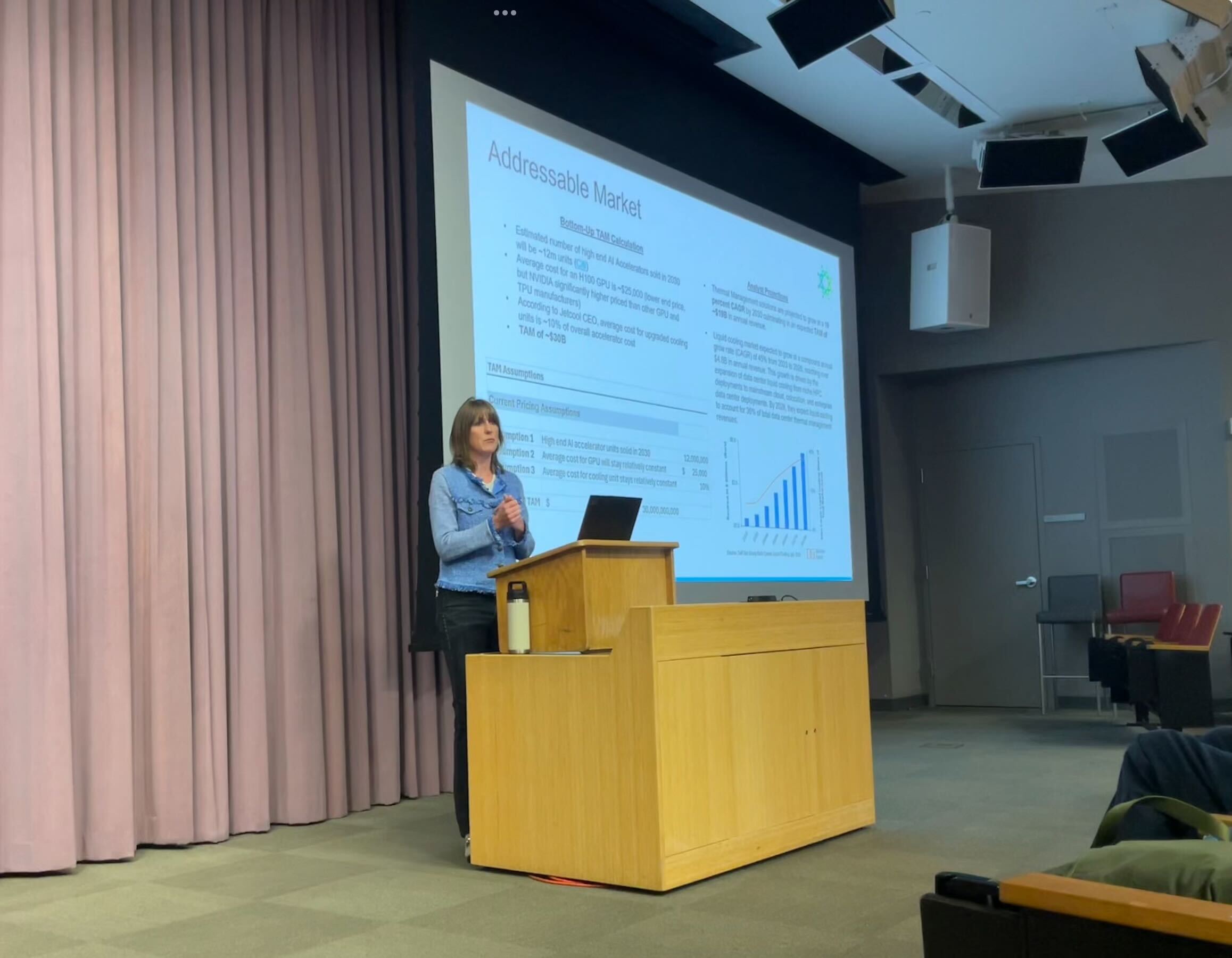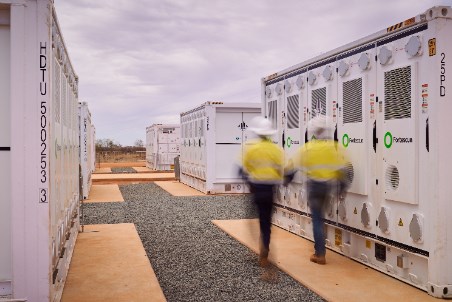Optimising bifacial dye-sensitized solar cells with graphene-enhanced TPT configuration photoanode for operational stability – Nature

Report on Optimising Bifacial Dye-Sensitized Solar Cells for Enhanced Stability and Efficiency
Executive Summary
This report details an investigation into enhancing the performance and operational stability of bifacial Dye-Sensitized Solar Cells (DSSCs) through the integration of graphene into a tri-layer Titanium Dioxide (TiO₂) photoanode. This research directly supports several United Nations Sustainable Development Goals (SDGs), primarily SDG 7 (Affordable and Clean Energy), by advancing a low-cost, efficient photovoltaic technology. The study found that an optimal doping concentration of 0.1% graphene in a T/sp-P25-T/sp (TPT) configuration yielded a maximum combined power conversion efficiency (PCE) of 11.09% under front and back illumination. This configuration also demonstrated significantly improved stability over a ten-day period compared to undoped cells. These advancements contribute to SDG 9 (Industry, Innovation, and Infrastructure) and SDG 11 (Sustainable Cities and Communities) by making DSSCs more viable for building-integrated photovoltaics (BIPV), a key component of sustainable infrastructure. The findings underscore the potential of graphene-enhanced photoanodes to accelerate the adoption of clean energy technologies, supporting global efforts towards SDG 13 (Climate Action).
1.0 Introduction: Aligning Photovoltaic Innovation with Sustainable Development Goals
1.1 The Imperative for Clean Energy Solutions (SDG 7 & SDG 13)
The global transition to renewable energy is critical for achieving SDG 7 (Affordable and Clean Energy) and combating climate change as outlined in SDG 13 (Climate Action). Solar energy technologies are at the forefront of this transition. Dye-Sensitized Solar Cells (DSSCs) represent a promising avenue due to their low production costs, use of abundant and non-toxic materials, and strong performance in low-light conditions. This aligns with SDG 12 (Responsible Consumption and Production) by promoting sustainable material cycles. This report focuses on bifacial DSSCs, which can capture light from both sides, enhancing their utility in diverse environments.
1.2 Graphene-Enhanced Photoanodes for Sustainable Infrastructure (SDG 9 & SDG 11)
A primary challenge for DSSCs is achieving high efficiency and long-term stability. This study addresses this challenge by integrating graphene, a material known for its exceptional electronic properties, into the TiO₂ photoanode. The objective is to improve electron transport and reduce recombination losses. By enhancing the durability and performance of DSSCs, this research aims to increase their commercial viability, particularly for applications in building-integrated photovoltaics (BIPV). Such innovations are fundamental to building resilient and sustainable infrastructure (SDG 9) and creating sustainable cities and communities (SDG 11).
2.0 Methodology
2.1 Materials and Preparation
The fabrication process utilized commercially available and abundant materials, consistent with the principles of sustainable production. Key materials included:
- Photoanode: Titanium Dioxide (TiO₂) pastes (Ti-Nanoxide T/sp and P25) and Graphene nanopowder.
- Substrates: Fluorine-doped tin oxide (FTO) glass.
- Electrodes: Platinum (Pt) counter electrodes.
- Electrolyte: An iodine/iodide-based liquid electrolyte.
Substrates were meticulously cleaned using a multi-step process involving ultrasonication and UV-light treatment to ensure optimal performance.
2.2 Fabrication of Graphene-Doped Photoanodes
A tri-layer photoanode with a TPT (T/sp-P25-T/sp) configuration was fabricated using a screen-printing technique. The central P25 layer was doped with varying concentrations of graphene:
- 0% (Control Sample)
- 0.05%
- 0.1%
- 0.2%
Each layer was subjected to annealing to ensure proper adhesion and structural integrity, creating a mesoporous structure optimized for light harvesting and dye adsorption.
2.3 Cell Assembly and Characterization
The complete DSSCs were assembled by sealing the graphene-enhanced photoanode with a platinum counter electrode and injecting the electrolyte. The assembled cells underwent comprehensive characterization to evaluate their performance and properties:
- Electrical Analysis: Current-Voltage (J-V) measurements were conducted over ten days to determine Power Conversion Efficiency (PCE), short-circuit current (Jsc), open-circuit voltage (Voc), and fill factor (FF). Electrochemical Impedance Spectroscopy (EIS) was used to analyze charge transfer dynamics.
- Optical Analysis: Ultraviolet-visible (UV-Vis) spectroscopy and Tauc plots were used to assess light absorption and determine the material’s bandgap.
- Structural Analysis: Field Emission Scanning Electron Microscopy (FESEM), Energy-dispersive X-ray Spectroscopy (EDS), X-ray Diffraction (XRD), and Raman Spectroscopy were employed to verify the morphology, elemental composition, and crystalline structure of the photoanodes.
3.0 Results and Analysis
3.1 Electrical Performance and Stability: A Step Towards Reliable Clean Energy (SDG 7)
The integration of graphene significantly improved the electrical output and operational stability of the bifacial DSSCs, marking a critical advancement for SDG 7. The cell with 0.1% graphene (TP₀.₁T) demonstrated superior performance.
- Peak Efficiency: The TP₀.₁T cell achieved a peak combined PCE of 11.09% (6.73% front + 4.36% back) on day 4 of testing.
- Enhanced Stability: After ten days, the TP₀.₁T cell maintained a total PCE of 10.31%, showing minimal degradation compared to the undoped TPT cell, which exhibited a more pronounced performance decline. This enhanced durability is crucial for the long-term viability of clean energy infrastructure.
- Improved Current Density: The TP₀.₁T configuration yielded a Jsc of 17.04 mA/cm², a notable increase over the 15.99 mA/cm² of the undoped cell, indicating more efficient charge collection.
EIS analysis confirmed these results, showing that the 0.1% graphene sample had the lowest charge recombination rate and an extended electron lifetime of 63.4 µs, compared to 31.8 µs for the undoped sample. This proves that graphene creates more efficient pathways for electrons, directly boosting the cell’s energy output.
3.2 Optical and Structural Characterization
Analysis of the material properties provided insight into the mechanisms behind the performance improvements.
- Optical Properties: UV-Vis spectroscopy showed that graphene doping enhanced light absorption, particularly in the visible spectrum. Tauc plot analysis revealed that the 0.1% graphene sample had a reduced bandgap of 3.18 eV (compared to 3.28 eV for undoped TiO₂), allowing it to absorb a broader range of light and generate more charge carriers.
- Structural Integrity: FESEM and EDS confirmed the successful and uniform integration of graphene nanosheets within the TiO₂ matrix. XRD and Raman spectroscopy verified that the TiO₂ maintained its highly desirable anatase crystalline structure, while the ID/IG ratio of 0.94 from Raman analysis indicated a moderate level of defects in the graphene, which can aid in charge separation.
4.0 Discussion: Implications for Sustainable Development
4.1 Advancing Affordable and Clean Energy (SDG 7)
The demonstrated 11.09% PCE and enhanced stability in a low-cost DSSC architecture represent a significant step toward making solar energy more affordable and accessible. By improving the core performance of a technology that relies on abundant materials, this research helps lower the levelized cost of energy, a key target of SDG 7.
4.2 Fostering Innovation for Sustainable Cities and Infrastructure (SDG 9 & SDG 11)
This work is an example of material science innovation (SDG 9) being applied to create sustainable solutions. The improved bifacial performance and potential for transparency make these graphene-enhanced DSSCs ideal for BIPV applications, such as energy-generating windows and facades. Integrating renewable energy generation directly into urban infrastructure is a cornerstone of developing sustainable cities (SDG 11).
4.3 Contributing to Climate Action (SDG 13)
Every improvement in the efficiency and durability of solar technology is a direct contribution to SDG 13 (Climate Action). By creating more effective solar cells, this research helps displace fossil fuel-based energy generation, reducing greenhouse gas emissions and mitigating the impacts of climate change.
5.0 Conclusion and Recommendations
This study successfully demonstrates that doping a tri-layer TPT photoanode with 0.1% graphene is an effective strategy for significantly enhancing the power conversion efficiency and operational stability of bifacial DSSCs. The resulting PCE of 11.09% and improved durability highlight the potential of this technology to contribute meaningfully to the achievement of multiple Sustainable Development Goals, especially SDG 7 (Affordable and Clean Energy).
The findings provide a strong foundation for the continued development of high-performance, low-cost solar cells suitable for widespread deployment. Future work should focus on:
- Long-term stability testing under real-world environmental conditions.
- Optimizing the fabrication process for large-scale production.
- Exploring the use of other sustainable, low-cost materials to further enhance performance and reduce environmental impact, in line with SDG 12.
1. SDGs Addressed or Connected to the Issues Highlighted in the Article
The research presented in the article on enhancing bifacial dye-sensitized solar cells (DSSCs) is directly connected to several Sustainable Development Goals (SDGs). The core focus on improving a renewable energy source has wide-ranging implications for sustainability.
-
SDG 7: Affordable and Clean Energy
This is the most prominent SDG addressed. The article focuses on developing “a promising low-cost” alternative to conventional solar cells. By aiming to enhance the “efficiency and stability” of DSSCs, the research directly contributes to making clean energy more effective, durable, and accessible. The use of “abundant, non-toxic materials” further aligns with the goal of providing sustainable energy solutions.
-
SDG 9: Industry, Innovation, and Infrastructure
The study is a clear example of scientific research and technological innovation. It explores novel methods, such as integrating graphene into photoanodes in a “trilayer structure,” to “upgrade the technological capabilities” of photovoltaic devices. The potential application in “building-integrated photovoltaics (BIPVs)” shows how this innovation can be integrated into sustainable infrastructure.
-
SDG 11: Sustainable Cities and Communities
The article explicitly mentions the suitability of this technology for “building-integrated photovoltaics (BIPVs).” By developing more efficient and aesthetically versatile solar cells that can be integrated into building materials, this research supports the creation of sustainable buildings and cities that can generate their own clean energy, reducing their overall environmental impact.
-
SDG 13: Climate Action
By advancing solar energy technology, the research contributes to climate change mitigation. Improving the efficiency and stability of solar cells makes them a more viable and competitive alternative to fossil fuels, which is essential for reducing greenhouse gas emissions and combating climate change.
2. Specific Targets Under Those SDGs Identified in the Article
Based on the article’s content, several specific SDG targets can be identified as being directly supported by the research.
-
Under SDG 7 (Affordable and Clean Energy)
- Target 7.2: By 2030, increase substantially the share of renewable energy in the global energy mix.
Explanation: The research aims to improve the “power conversion efficiency (PCE)” and “durability” of solar cells. A higher PCE (the study achieved over 11%) and better stability make solar technology more effective and reliable, encouraging its wider adoption and thus increasing the share of renewable energy. - Target 7.a: By 2030, enhance international cooperation to facilitate access to clean energy research and technology… and promote investment in energy infrastructure and clean energy technology.
Explanation: This scientific paper itself is a product of research and contributes to the global knowledge base on clean energy technology. The study’s focus on “low production costs” and using materials like graphene to enhance performance promotes the development of more advanced and economically viable clean energy technologies.
- Target 7.2: By 2030, increase substantially the share of renewable energy in the global energy mix.
-
Under SDG 9 (Industry, Innovation, and Infrastructure)
- Target 9.4: By 2030, upgrade infrastructure and retrofit industries to make them sustainable, with increased resource-use efficiency and greater adoption of clean and environmentally sound technologies.
Explanation: The development of efficient DSSCs for BIPV applications is a direct contribution to upgrading building infrastructure to be more sustainable and energy-efficient. The article’s mention of using “abundant, non-toxic materials” aligns with the adoption of environmentally sound technologies. - Target 9.5: Enhance scientific research, upgrade the technological capabilities of industrial sectors in all countries… encouraging innovation.
Explanation: The entire study is an exercise in enhancing scientific research. It investigates a novel approach (“first demonstration of graphene-enhanced trilayer TPT configuration photoanodes in bifacial DSSCs”) to solve existing limitations in solar cell technology, thereby upgrading technological capabilities in the renewable energy sector.
- Target 9.4: By 2030, upgrade infrastructure and retrofit industries to make them sustainable, with increased resource-use efficiency and greater adoption of clean and environmentally sound technologies.
-
Under SDG 11 (Sustainable Cities and Communities)
- Target 11.6: By 2030, reduce the adverse per capita environmental impact of cities.
Explanation: By enabling buildings to generate their own clean electricity through BIPV, this technology helps reduce a city’s reliance on centralized, often fossil-fuel-based, power grids. This directly contributes to lowering the per capita carbon footprint and environmental impact of urban areas.
- Target 11.6: By 2030, reduce the adverse per capita environmental impact of cities.
3. Indicators Mentioned or Implied in the Article
The article provides several quantitative and qualitative indicators that can be used to measure progress towards the identified targets.
- Power Conversion Efficiency (PCE): This is the primary performance metric used throughout the article. The study reports achieving a “highest initial power conversion efficiency (PCE) of 11.09%” and a stabilized total PCE of “10.31% after stabilizing on the tenth day.” This is a direct indicator of the efficiency of the renewable energy technology (relevant to Target 7.2).
- Operational Stability/Durability: The research measures performance “over a period of ten days” and highlights “dramatically improved 10-day stability.” The electron lifetime was measured and extended to “63.4 µs” with graphene doping. This serves as an indicator of the technology’s reliability and longevity, crucial for its practical implementation (relevant to Target 7.2 and 9.4).
- Short-Circuit Current Density ((J_{SC})): The article reports an improved (J_{SC}) of “17.04 mA/cm²” for the 0.1 wt% graphene sample compared to “15.99 mA/cm²” for the standard configuration. This is a key electrical parameter indicating enhanced performance and light-harvesting capability.
- Charge Transfer Resistance (Rct): Electrochemical Impedance Spectroscopy (EIS) was used to measure charge dynamics. The article notes that “graphene decreases charge transfer resistance,” which is a specific indicator of improved electron transport and, therefore, higher efficiency (relevant to Target 9.5).
- Cost and Material Accessibility: The article repeatedly refers to DSSCs as a “promising low-cost” technology with “low production costs” that uses “abundant, non-toxic materials.” While not quantified with a dollar value, this qualitative indicator is crucial for assessing the “affordable” aspect of SDG 7.
4. Table of SDGs, Targets, and Indicators
| SDGs | Targets | Indicators Identified in the Article |
|---|---|---|
| SDG 7: Affordable and Clean Energy | 7.2: Increase the share of renewable energy.
7.a: Facilitate access to clean energy research and technology. |
|
| SDG 9: Industry, Innovation, and Infrastructure | 9.4: Upgrade infrastructure with clean and environmentally sound technologies.
9.5: Enhance scientific research and upgrade technological capabilities. |
|
| SDG 11: Sustainable Cities and Communities | 11.6: Reduce the adverse per capita environmental impact of cities. |
|
| SDG 13: Climate Action | 13.3: Improve capacity on climate change mitigation. |
|
Source: nature.com
What is Your Reaction?
 Like
0
Like
0
 Dislike
0
Dislike
0
 Love
0
Love
0
 Funny
0
Funny
0
 Angry
0
Angry
0
 Sad
0
Sad
0
 Wow
0
Wow
0




















































.jpg.webp?itok=0ZsAnae9#)



























